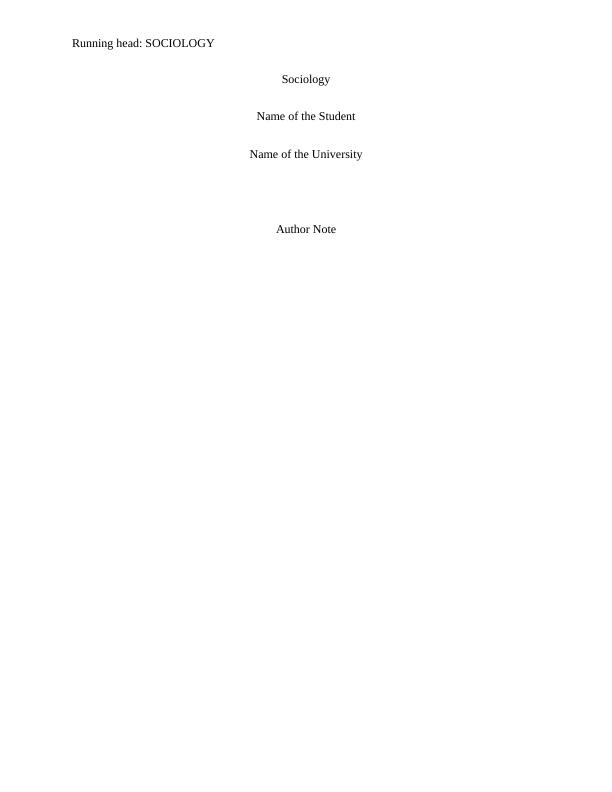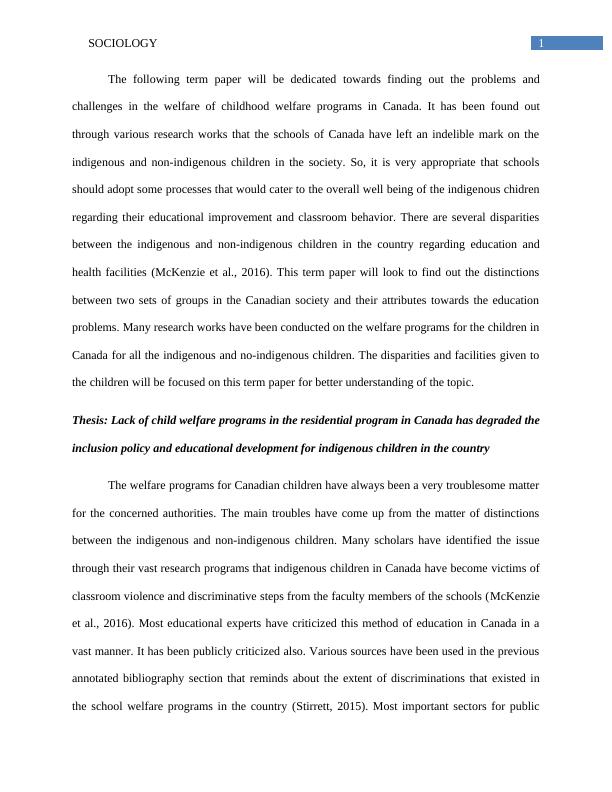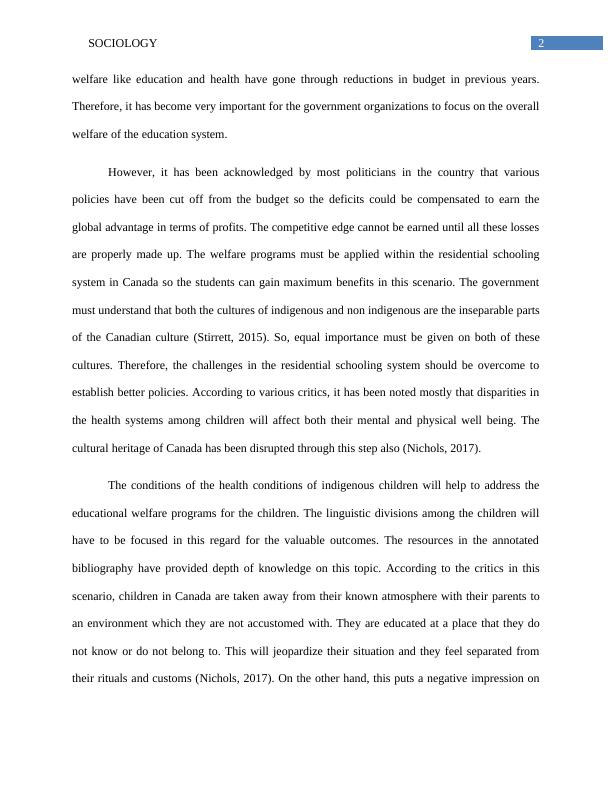Children's Welfare in Canada: A SOCIOLOGY 9 SOCIOLOGY Perspective
Evaluation of Current Child Welfare Program in Canada
12 Pages3552 Words113 Views
Added on 2022-08-15
About This Document
It has been found out through various research works that the schools of Canada have left an indelible mark on the indigenous and non-indigenous children in the society. There are several disparities between the indigenous and non-indigenous children in the country regarding education and health facilities (McKenzie et al., 2016). Thesis: Lack of child welfare programs in the residential program in Canada has degraded the inclusion policy and educational development for indigenous children in the country The welfare programs for Canadian children have always been
Children's Welfare in Canada: A SOCIOLOGY 9 SOCIOLOGY Perspective
Evaluation of Current Child Welfare Program in Canada
Added on 2022-08-15
ShareRelated Documents
End of preview
Want to access all the pages? Upload your documents or become a member.
Child welfare in Canada -Overview
|11
|2882
|18
Sociology: Equality Rights of Aboriginal People in Canada
|15
|2578
|51
The aboriginal community of Canada
|5
|1117
|16
The social determinants of health
|8
|2016
|12
Indigenous Ways of Learning and the Role of the Elders in Learning Process
|8
|2123
|127
The Concept of Health in Rural Society- Report
|4
|729
|24




